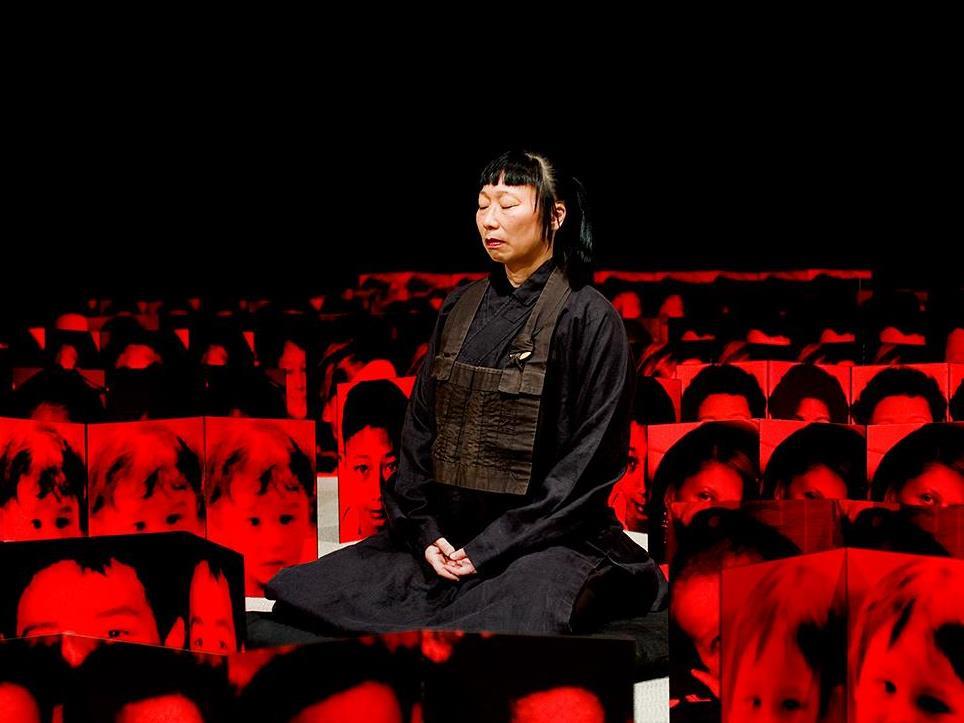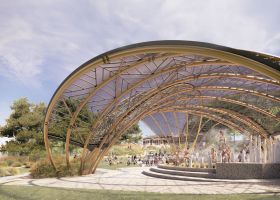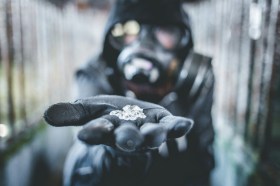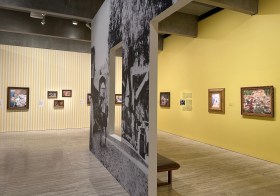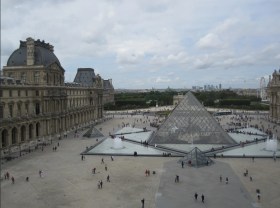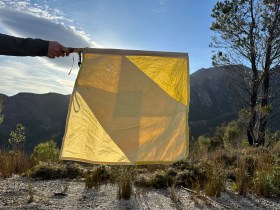When Australia’s most prominent Asian art gallery, the 4A Centre for Contemporary Asian Art, started 20 years ago there was no such thing as Asian-Australians. The people existed but the term didn’t.
The new centre called itself the Asian Australian Artists Association (4A) and provided a forum for artists to explore the connected points between the two identities.
The hyphen between the term ‘Asian’ and ‘Australian’ that has developed since is a symbol of what has changed, Ien Ang, Professor of Cultural Studies and founding Director of the Institute for Culture and Society, University of Western Sydney (UWS), told a recent symposium.
‘That hyphen is what 4A was trying to activate as an organisation,’ said Ang.
Mikala Tai, Director of 4A, said the term arose in the 1990s as Asia emerged in the Australian public consciousness. ‘The 1990s were a turning point both in change within Asia and within as also a huge period of change in Asia itself. We moved to engage with it because it was economically important.’
Born in racism
Initially the term Asian-Australian was used to imply that anyone who looked Asian could not be a ‘real Australian’ and then, in response, to develop a positive Asian-Australian identity.
‘We were beginning to feel integrated, but around the mid-90s there was a period of heightened racism and we started to feel yellow and brown all over again. That really bought together the solidarity platform of Asia-Australia, hyphenated or not. It was an opportunity for artists, academics and community activists to come together, and since then that platform has remained,’ said Professor Jacqueline Lo, Executive Director of the ANU Centre for European Studies
Artist Owen Leong, who had his first exhibition at 4A, said the rise of Hanson also enabled the rise of a positive Asian-Australian identity.
‘When I was growing up I was surrounded with this politics of Asian fear. At the same time as the rise of Pauline Hanson in mid 90s, I became aware of other Asian-Australians and 4A. It had a very important role to play as they provided a counter narrative – a space in which I could locate my own voice and I could talk about diversity and my un-belonging.
‘I took way from that experience that artists can be agents for change and can shift focus in the public space.’
Artist Lindy Lee returned to Australia around this time after working in London.
‘I just wanted to fit in growing up on the tail end of assimilation. I was trying to make my art white; trying to make it Western but soon as I realized that I had to declare it was a bad imitation of me,’ she said.
‘My work came into prominence at a time when Australia was trying to understand its identity. We moved from assimilation to multiculturalism. I had to declare my Asian-Australian self otherwise I was too quickly co-opted into an avant-guardism and I wasn’t part of that.’
John Young, one of the founding artists behind the establishment of 4A, also found the rise of the idea of an Asian-Australia gave him a new space to belong.
‘In the 1980s there were only a few Chinese-Australian artists and, as Lindy said, we really had to put a white face on to contribute,’ said artist John Young.
He said the period gave artists ‘a huge sense of moment to think that maybe there is space for our voice here.’
Director 4A Mikala Tai speaks about what it is to be “Asian-Australian”; produced by ArtsHub TV.
Today’s new racist rhetoric
Leong noted that today the rhetoric has changed and the attacks are being felt by Muslims and refugees.
Seventh generation Australian artist Abdul Abdullah is one artist who has felt that. He describes himself as ethnically ambiguous but as primarily a Muslim artists. ‘My Australian-ness is secondary,’ he said.
‘I see my religious identity almost primarily as a political identity’, said Abdullah.
‘I feel that as an artist I have a similar role to a journalist,’ he added. ‘When we talk about race and Pauline Hanson it is what they are projecting on us … The Asian experience is a colonised experience.’
Abdullah tries to unpack some of those negative perceptions and stereotypes in his videos and photographs.
‘Australian culture is reflected on our morning television – that is how Australia views itself and we are not represented in that conversation.’
Read: Inspire60: Abdul Abdullah
Photographer Mayu Kanamori and artist John Young also spoke of the responsibility Asian-Australians feel to be a voice against discrimination. But Young said the new context did not favour labelling.
‘There are some projects where you couldn’t possibly talk about identity because as soon as you do it closes you off as “an identity artist” and they don’t take you seriously.
Young continued: ‘We have a responsibility not just to the social now but the social in a vertical axis of time – to think about how the work will sit in the future,’ he said.
On the other hand former 4A Director Aaron Seeto, who is now Curatorial Manager, Asian and Pacific Art at the Queensland Art Gallery, said, ‘We have to be careful what we expect art and artists to do, and be careful that it just doesn’t slip into role of propaganda.’
Artists Owen Leong and Abdul Abdullah at 4A symposium exploring the current state of Asia-Australia; photo ArtsHub
Enjoying a double identity
The term Asian-Australian is much more positive now.
‘People do have a pride in being Asian-Australian now,’ said Lee.‘It’s a weird “schitzo” thing – you grow up with it. My generation turned the tide. It’s just a given now. It’s not just accepted, but it’s normalized. It was hard fought for.’
Ang agreed: ‘Being Asian these days is no longer a curse. It’s truly transnational and integrated regionally and at the forefront of innovation globally.’
Leong said it was important to continue to discuss the complex nature of identity, to ensure the concept of being Asian-Australian was not too simply defined and the voice artists want is not overpowered.‘I could position my Asia-Australian body as the centre of my work, and that kernel of idea has passaged through 10-years of my practice now and set against a changing social landscape,’ said Leong.
‘For me it is about creating possibilities through my practice. So if someone encounters my work and it jolts something in them and they take away a slightly different perspective of what it means to be Asian-Australian, they that is a step forward.’
In the changing political world and the associated fashions of the art marketplace, being Asian-Australian now has a certain value that artists are able to leverage.
‘We feel that belong to Asia, but also Asia doesn’t feel we belong to them,’ said Young. ‘In past I used to think it was a good thing to be totally flexible and feign I was a Chinese artist but now I really concentrate on being transcultural – It is a bit more political.’
For some the hyphen offers has become an opportunity. ‘Sometime I want to foreground something in Australia, but when I travel overseas I might be just an Australian artist. But if I travel to China there might be this juncture where they say, “Are you Chinese?” Whether talking about the hyphen, or the missing hyphen, it symbolises for me the fluidity of our identity as Asian-Australian,’ said Leong.Abdullah added: ‘When I’m in Australia I’m Asian, and when I’m Malaysia I’m a white fella. But in Asia it is a different conversation. At first there is a little confusion on why I am making this work.’
Kanamori, on the other hand, said that her work is unequivically Australian. ‘I have made the work as an Australian for an Australian audience. People say it is a natural to show the work in Japan (because of my heritage) but it doesn’t work. To be honest, I am making work for white Australia rather than international audiences,’ she said.
Lindy Lee concluded the symposium with an acceptance of complexity.
‘We can’t homogenise things. We all carry huge amounts of histories that make us who we are, but we also have an “unhistoricity” – that is every moment is new. So we actually have to learn how to exist with this world. Each generation has to embrace the present and learn what is going on.
She shared an anecdote of her mother who said: ‘I never gonna understand Lindy but she ok.’ That sentiment of acceptance without having to understand every nuanced relationship of our vast cultural heritage in Australia is a lesson to all.
